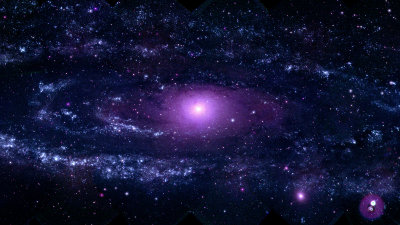The photograph taken by NASA's James Webb Space Telescope is a masterpiece of Jupiter's aurora shining in rich colors

by NASA, ESA, CSA, Jupiter ERS Team; image processing by Judy Schmidt.
NASA has released a photo of Jupiter taken with the James Webb Space Telescope. The latest image of Jupiter, so beautiful that astronomers say, ``I honestly didn't expect it to be this good,'' reveals the mystical glow of Jupiter's auroras and the usual faint glimpse. Jupiter's rings can be observed.
Webb's Jupiter Images Showcase Auroras, Hazes – James Webb Space Telescope
Below is one of the two pictures of Jupiter released by NASA this time. This picture is a composite of multiple images taken with the near-infrared camera of the James Webb Space Telescope, which can observe infrared rays invisible to humans. A red filter reveals the polar auroras, while another yellow and green filter reveals swirling haze over the north and south poles. A third filter, assigned to blue, captured reflected light from deeper cloud layers.

by NASA, ESA, CSA, Jupiter ERS Team; image processing by Judy Schmidt.
Also, the
'This brightness indicates a high altitude, and the Great Red Spot is haze at a similar altitude near the equator,' said Heidi Hamel, vice president of science at the Association of Universities for Astronomical Research (AURA). The numerous bright patches and streaks are probably very high cloud peaks formed by condensed convective storms, by contrast the darker ribbon north of the equator is mostly clouded. No,” he said.
This is the second photo taken with a wide field of view.

by NASA, ESA, CSA, Jupiter ERS Team; image processing by Ricardo Hueso (UPV/EHU) and Judy Schmidt.
You can see

by NASA, ESA, CSA, Jupiter ERS Team; image processing by Ricardo Hueso (UPV/EHU) and Judy Schmidt.
'Honestly, I didn't expect it to be this good,' said Imke de Pater, a planetary astronomer at the University of California, Berkeley. It is very surprising to be able to see the details.'
Related Posts:
in Science, Posted by log1l_ks







